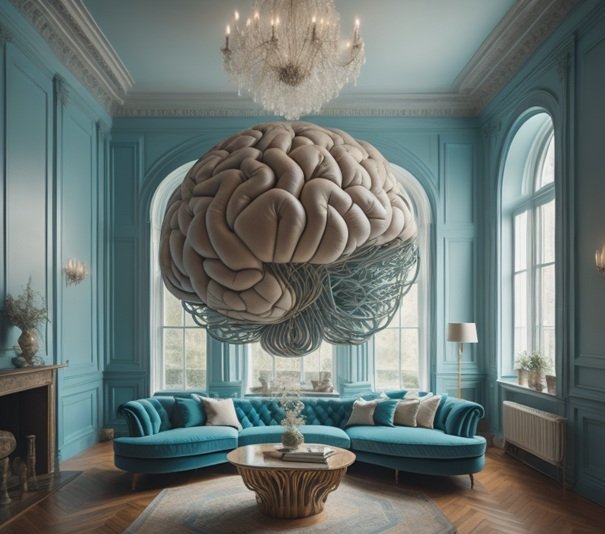How ‘psychology meets design’ is not enough. Why it should say ‘neuroscience meets design’.
Why is it not enough? To answer that question, let’s take a trip on the history lane of design.
Even through history people were preoccupied with how they were living, in which areas and which buildings. It mostly was a way of expression and a display of one’s wealth. The bigger the better, the more opulent the better. If you watch MTV cribs, we know it still counts.
In oriental philosophy it was believed that your interior design had an influence on your happiness and energy. It’s a real treat that we now know that multiple elements of that philosophy, also have a scientific base. They didn’t knew then, but we know now!
In psychology the correlation between someone’s personality traits and their home interior was studied.
In a sideway of psychology, environmental psychology emerged and it was seen how the design of public space could influence the behavior of people. It can effect criminality rates in a city or how much or fast you would put something in a bin. And in commercial settings, marketing psychology looks at how people would buy more or faster through the use of the things that surrounds them. Think for example of how the scent of bread in a bakery actually increases sales. So last time you were in a bakery, are you sure you really wanted that cinnamon roll?
In cognitive psychology, we also learned a lot about visual perception and how emotion can be evoked, what tickles and intrigues. For example, we love it more to see a visual of a scantily clad woman than a woman who is totally naked. It seems in a whole, people like to solve puzzles. It actually releases pleasure or dopamine in your brain. So sorry to break it to you, the good looking woman has nothing to do with it! But please do not use this as some kind of excuse towards your partner. You know us psychologists: always having some tricks up our sleeves.
In interior design and the design of outdoor spaces, many designers take into account how colors can impact how people feel. Is there even someone out there that hasn’t heard of it yet? Hello, color psychology!
In a new field, called the interior design psychology, as a part of environmental psychology, design psychologists try to design interior in regard of psychological concepts and constructs in an individual manner. And however this is already very interesting,
What remains missing, is the knowledge about the interaction between the environment and the functioning of the brain. And here is where it gets fascinating!
Why? Well because of the simple fact of interaction of course. Neuroscientific research, in an area called neuro-aesthetics, shows us not only how environmental elements, including design, can effect how you feel and behave and therefore have an influence on your brain. All you feel, think and do, flows from your brain after all. No, it also shows us how it can change your brain! Say that again?
By altering the elements that surround you, it’s possible to make pathways between braincells more or less strong for example. Like you would do when you practice playing a musical instrument or when you have to rehabilitate after an accident or a stroke. Even in rehabilitation clinics they know the way into your brain.
So you see, implementing neuroscience into design, is the sum of all of the above. It’s next level. It’s creating and designing in a very customized and individual manner.
By creating the ideal world around you, you take care of your brain. You give it what it needs, so it can grow, flourish and be at it’s best.
It’s how you would nurture a child, that you love…so why not your brain…the piece that incorporates your heart and soul and your individuality, it’s the whole essence of your being. Would you not want to take care of that?
Knowing me, knowing you…the only thing we can do…is use neuroscience as a core part of our design process!
http://www.misenmind.com/
